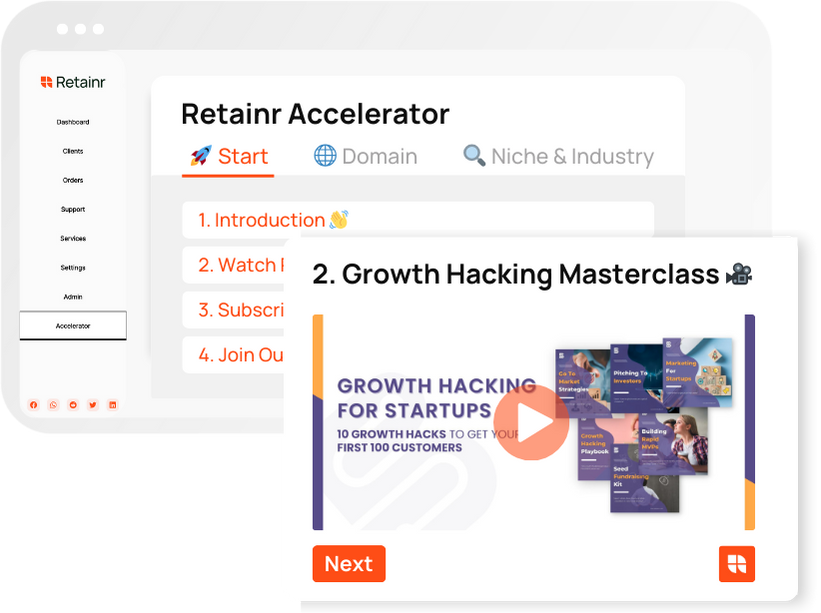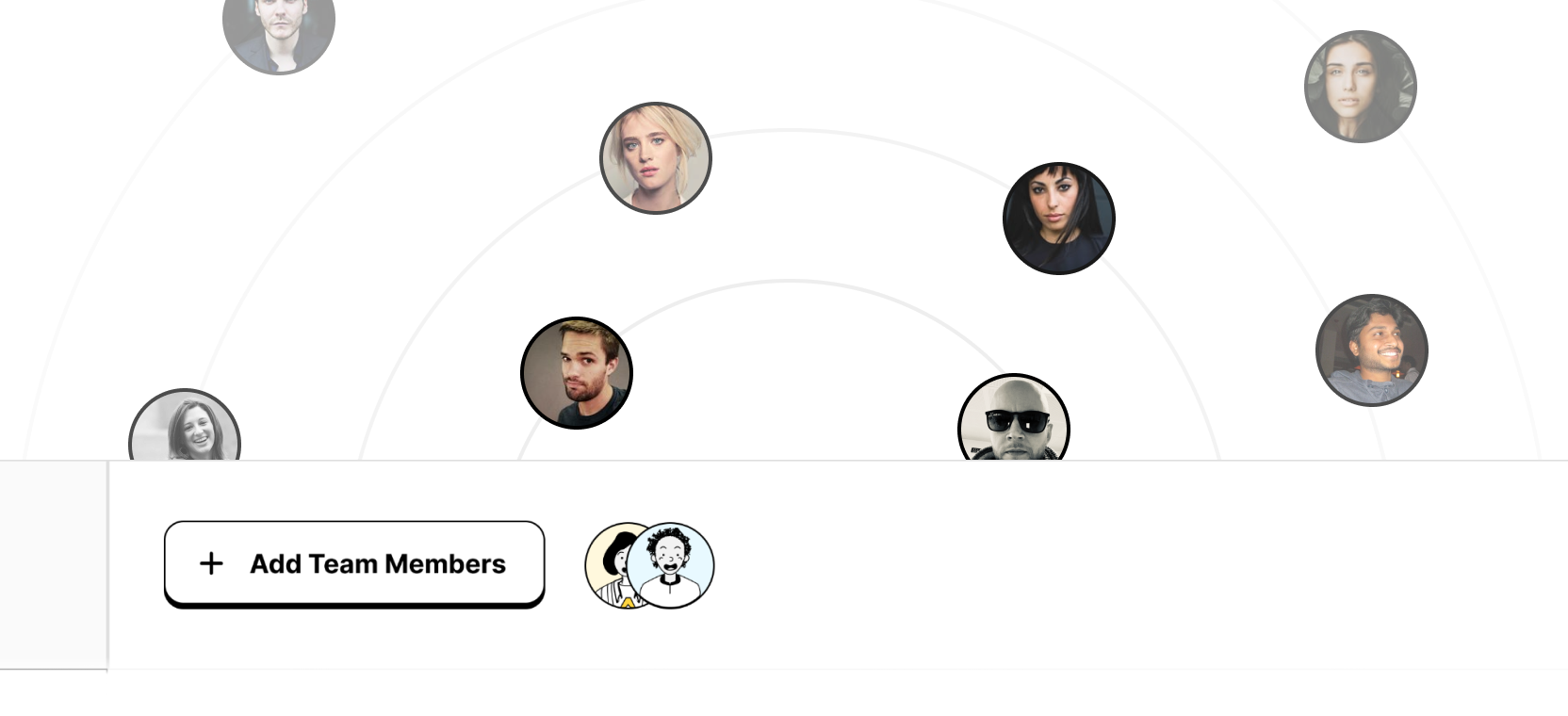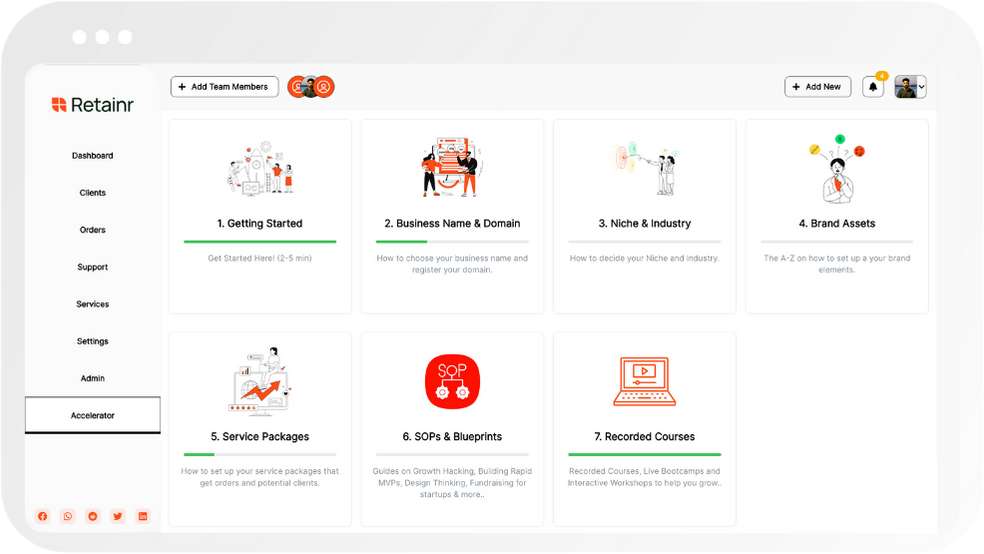
5 Tips for Building a Successful Mobile App for Agency Clients
Build with Retainr
Sell your products and services, manage clients, orders, payments, automate your client onboarding and management with your own branded web application.
Get Started1. What are the top five tips for building a successful mobile app for agency clients?
Understanding Client's Requirements
The first fundamental step towards building a successful mobile app is understanding the client's requirements. Ask detailed questions to your client about their business, expectations, target audience, and competitor apps. Prepare a consolidated requirements document consisting of all this information. It's very important to refer back to this document throughout the development cycle.
- Identify the purpose of the app.
- Learn about the target audience of the business.
- Research on competitor apps.
- Consolidate all gathered information.
Design Thinking Approach
Ensure you adopt a design thinking approach while developing the mobile app. This includes evaluating usability, implementing best UI/UX practices, and prioritizing a user-centric design. Prototyping is another essential aspect of design thinking, allowing for user interaction testing and minimizing changes during the development process.
- Evaluate app's usability.
- Follow best UI/UX practices.
- Prioritize user-centric design.
- Prototype for user interaction testing.
Performance and Security Measures
Performance can make or break the success of a mobile app. As such, it’s vital to optimize interfaces, databases, and services. Add to this the importance of strong security measures that ensure user data protection, and you would have taken care of two pivotal aspects of mobile app development.
| Performance | Security Measures |
|---|---|
| Interface optimization | Data protection |
| Database optimization | Encryption |
| Service optimization | Secure coding practices |
2. How do I ensure my mobile app caters to an agency client's needs?
Understand the Client's Business and Customer Base
First and foremost, understanding your client's business, their target market, and their goals will play a major role in creating an effective mobile app. Conduct research into their industry, analyze their competitors' apps, and gather data on the customer's behaviour and preferences. Below is a sample data gathering table:
| Client's Industry | Competitor's Apps | Customer's Behaviour and Preferences |
|---|---|---|
| Real Estate | Zillow, Trulia | Light interface, Cost calculator, Neighbourhood information |
Focus on User Experience
Secondly, a successful mobile app is largely dependent on the user's experience. Strive to create an intuitive, straightforward, and user-friendly tool. Moreover, aesthetics also matter. A visually appealing app can attract more users and create a positive impression. Here are some points to consider:
- Simple, intuitive navigation
- Clear, readable content
- Consistent design elements
- Quick loading times
- Minimum ads
Don’t Overlook Feedback
Last but not least, constantly ask for and pay attention to the feedback from both your agency client and the end-users. Regular feedback helps to identify any areas of improvement, understand the user's needs, and implement necessary updates. The process can be simplified as follows:
- Release the initial version of the app.
- Gather and analyze feedback.
- Make appropriate improvements/adjustments.
- Release the updated app.
- Repeat the process.
3. Why is it important to understand the target audience when building a mobile app?
Understanding the Target Audience Importance in Building a Mobile App
At its essence, building a successful mobile app depends remarkably on the thorough understanding of the target audience, their behaviors and their needs. This information is crucial for several reasons.
- Feature Development: A comprehensive knowledge about the target audience helps to define what feature should be included in the app. If you understand what your audience expects from your application, you can ensure it serves its intended purpose effectively.
- User Interface Design: Understanding your audience enables you to develop an interface that aligns with their preferences and needs. Perhaps your audience prefers simplicity or they appreciate a certain aesthetic style. Knowing this could potentially enhance their user experience, leading to increased user retention.
- Marketing Strategy: Recognizing your audience not only benefits the app's development but also its marketing strategy. Knowing what appeals to them allows you to design and deliver accurate promotional strategies.
| Audience Metrics | Benefits |
|---|---|
| Demographics | Assist in creating a personalized user interface and marketing strategies |
| Preferences | Helps build in-demand features and functionalities |
| Behavior | Defines the right promotion and marketing plans |
In conclusion, understanding the target audience is of paramount importance. Not only does it drive the development of appropriate and appealing features, but it also shapes the user interface design and most importantly, it aids in constructing a targeted and effective marketing plan. By understanding your audience, you'll be able to build an app that meets users' needs, is aesthetically pleasing, and is well-positioned to gather a considerable user base through targeted marketing strategies.
4. What role does user-friendly design play in creating a successful mobile app for agency clients?
The Importance of User-Friendly Design
Creating a user-friendly design is of utmost importance in building a successful mobile application for agency clients. This aspect not only impacts the overall user experience (UX) but also plays a key role in maintaining user retention. Here are a few reasons:
- Creates a Positive First Impression: When users find an app easy to use, they form a positive initial impression which makes it more likely that they will return to use the app again.
- Increases User Engagement: With a user-friendly design, users find the app more engaging and are more likely to spend a longer time on the app, improving your app’s engagement metrics.
- Reduces App Uninstallations: A complicated, confusing, and hard to navigate app tends to be uninstalled by users without a second thought. Thus, simplicity and ease of use can help reduce app uninstallation rates.
Implementing User-Friendly Design Principles
In order to provide a user-friendly design that significantly boosts the success of your mobile app, consider the following principles:
- Usability: The app should be easy to use with clear instructions and intuitive navigation.
- Consistency: Uniformity in font, color, and layout throughout the app gives it a professional look and feel.
- Minimalism: Keep the design simple and clutter-free. Overcrowded screens can be overwhelming for users.
- Responsiveness: Ensure your app performs well and loads quickly. Slow response and lag can lead to user frustration and app abandonments.
- Accessibility: Your app should be accessible to users of all abilities, including those with visual, physical or other impairments.
Impact of User-Friendly Design on Mobile App Success
| Impact | Description |
|---|---|
| User Retention | A user-friendly design keeps users coming back and enhances user retention rates. |
| User Acquisition | It makes a good first impression that can result in organic user growth through positive word-of-mouth. |
| Conversion Rates | A well-designed, easy-to-use app boosts conversion rates by persuading users to enact desired behaviors, such as making a purchase or signing up for a subscription. |
5. What are some best practices to test and fix bugs in a mobile app for agency clients?
Best Practices to Test and Fix Bugs
When building a mobile app for agency clients, ensuring seamless functionality is essential. As part of the quality assurance process, testing and debugging should be carried out thoroughly. Implementing the following practices could significantly enhance the efficiency of this process.
- Implementing Automated Testing: Automating tests for routine test cases can immensely bolster the speed and accuracy of app testing. It's important to combine multiple testing methods such as unit testing, integration testing, and UI testing.
- Utilizing Appropriate Testing Tools: Depending on the nature and complexity of the app, various testing tools can be employed. Tools like Appium, TestComplete and UXCam can support app testing in different ways, including functional, performance and usability testing.
- Frequent Beta Testing: Beta testing by releasing the app to a limited audience helps gain feedback before the broader launch. It exposes the app to diverse devices, operating systems, and user interactions, providing invaluable insights.
- Error Logging: Using error logging platforms like Sentry and Crashlytics help to identify, track, and understand the source of bugs for easier resolution.
- Feedback Loop & Continuous Improvement: Lastly, it’s crucial to note that testing is a continuous process. App updates, performance monitoring, user experiences and feedback should be used for continuous improvement.
Testing Tools and Their Function
When it comes to selecting a testing tool, understanding how each operates is key. The table below provides a quick glance at three popular testing software and their special functions.
| Testing Tool | Function |
|---|---|
| Appium | Open-source tool designed to automate mobile app testing for Android and iOS apps. It supports Native, Mobile, and Hybrid app testing. |
| TestComplete | Provides automated testing for complex applications and aids data-driven testing. It comes preset with AI-generated reusable codes to maximise testing efficiency. |
| UXCam | Primarily focuses on improving the user experience by identifying usability issues via session replays and user interaction data. |
6. I'm a novice app developer, can you explain why constant updates and maintenance are essential for a successful mobile app?
The Importance of Constant Updates and Maintenance
If you're a novice app developer, it might be unclear why constant updates and maintenance are critical components of successful app development. Here's a simplified explanation. Imagine a shiny, new car. Without periodic servicing, oil changes, and inspections, it quickly loses functionality, becomes outdated, and eventually breaks down. Similarly, mobile apps need regular upkeep to keep them running smoothly, stay current and meet users' expectations.
Reasons for Regular Updates and Maintenance
- User Expectations: Modern users expect apps to be regularly updated with new features, bug fixes, and performance improvements.
- Security: Outdated software often has vulnerabilities that cyber attackers can exploit. Regular updates often fix these vulnerabilities.
- Technical Compatibility: As operating systems (OS) like iOS and Android release updates, your app needs to stay compatible with these changes.
- Competition: Regular updates can help your app stay competitive in the ever-evolving app market.
Table: Importance of Updates and Maintenance
| Aspect | Reasons |
|---|---|
| User Expectations | Regular addition of features, bug fixes, and performance improvements needed to meet user expectations. |
| Security | Fix vulnerabilities, stay resistant against attacks and protect user data. |
| Technical Compatibility | Stay compatible with updated operating systems such as iOS and Android. |
| Competition | Stay competitive and relevant in the ever-evolving app marketplace. |
7. Can you provide examples of how to incorporate agency client's brand into a mobile app?
Brand Integration Methods
One way to incorporate an agency client's brand into a mobile app is through the app's overall aesthetics. This includes design elements such as the color scheme, typography, and logo. Here is an example of how to integrate these elements:
- Color Scheme: Use the primary, secondary, and neutral colors of the client’s brand palette for your app's user interface. It helps in maintaining brand consistency.
- Typography: All on-screen text should utilize the brand's chosen font, considering its accessibility and legibility on a mobile view.
- Logo: Incorporate the brand logo into the app icon or splash screens to enhance brand visibility.
Brand Messaging in App Contents
Another important factor to consider, besides design elements, is the inclusion of a brand's unique message. This represents the agency client's values, core ideas, and tone of voice. Here are examples:
- App Description: Make sure that the app store description encapsulates what the brand stands for, using the appropriate tone of voice.
- Push Notifications: The tone and content of push alerts should echo the brand's messaging. Remember, these notifications often act as direct communication with users.
- User Interaction: If the app includes user interactions such as customer service messages or user prompts, make sure to include the brand's voice in these areas as well.
Managing Customizable Features with Branding
Lastly, one must bear in mind that offering customized features or personalized content doesn't mean giving up on brand consistency. You can demonstrate this through:
| Feature | Branding Strategy |
|---|---|
| Profile Customization | Allow users to personalize their profile but provide brand-themed options for backgrounds, avatars, and so on. |
| Personalized Content | While the content may vary based on user preference, the presentation of that content (fonts, formatting, colors) should maintain brand consistency. |
| App Sounds | Any sounds, jingles, or notifications should be in tune with the brand's personality. |
8. How important is it to ensure fast and reliable performance of a mobile app for agency clients?
The Importance of Fast and Reliable Performance in Mobile Apps
Fast and reliable performance is crucial in mobile apps for agency clients for several reasons. Users generally have high expectations for app functionality and speed. Laggy and unreliable apps can lead customers to defect to competitor's solutions, affecting the agency's reputation and bottom line.
- User retention: Speedy apps create a positive user experience and lead to higher user retention rates. According to studies, users tend to abandon apps that take more than 2-3 seconds to load.
- Increased revenue: Faster apps can contribute to higher revenue. For ecommerce businesses, slow loading times can directly impact sales and conversions.
- Improved ratings: Reliable and fast apps often receive better ratings on app stores, which helps to attract new users and enhances the agency's reputation.
- Higher SEO ranking: Page speed is a known SEO ranking factor. Fast-loading apps are favored by search algorithms and can hence enhance your app’s visibility.
Improving Mobile App Performance
To ensure the fast and reliable performance of a mobile app, several strategies can be employed.
| Performance Enhancement Technique | Description |
|---|---|
| Code Optimization | Refactoring and optimizing code can significantly speed up an app by reducing unnecessary processes. |
| Use of Appropriate Graphics and Multimedia | High-quality graphics can slow down an app, therefore it's important to balance app aesthetic with speed. |
| Regular Testing | Identify and fix bugs early by conducting regular performance testing on different devices and platforms. |
| Server Optimization | Back-end system should be efficient and responsive to quickly process requests and reduce loading times. |
9. Can you provide details on how to effectively gather and analyse feedback when building a mobile app for agency clients?
Gathering Feedback
Effective feedback collection is a sterling tool while building mobile apps. The feedback gathered from stakeholders and users can help you refine your product to meet their needs better. Here are some methods for collecting practical feedback:
- Surveys: This could be done during the testing phase or after the app launch. You can ask targeted questions to get relevant input.
- User Testing: By allowing users to use your app in their natural setting, you can gather valuable insights about the user experience. Tools like TestFlight and Ubertesters can help with this.
- Focus Groups: This is a method where you bring together a group of users to discuss the app. This captures data about the usability and likeability of the app.
- In-app Feedback: In-app feedback options allow for instant feedback from users while they are using the app.
Analysing Feedback
After collecting feedback, it's critical to analyse it properly to take meaningful action. Here are some steps to consider:
- Categorise Feedback: Categorise feedback into different groups like functionality issues, design suggestions, and feature requests. This allows for easy allocation of tasks among the team.
- Prioritise Actions: Not all feedback will require immediate action. Prioritise according to the severity of issues and the potential impact on the user experience.
- Document Changes: As changes are made, document them. This will assist in tracking improvements and potential areas of regression.
Sample Feedback Analysis Table
| Category | Feedback | Actionable Item | Priority |
|---|---|---|---|
| Functionality Issues | App crashes when accessing the profile section. | Fix crashes related to profile section | High |
| Design Suggestions | The text size is too small to read comfortably. | Adjust text size for readability | Medium |
| Feature Requests | Users would like an ability to customize the background theme. | Develop a theme customization feature | Low |
10. What role does integrating social media platforms play in building a successful mobile app for agency clients?
Importance of Social Media Integration
Integrating social media platforms into a mobile app development for agency clients plays multiple significant roles. To start with, this integration magnifies the possibility of promoting app visibility and consequently drives more downloads. It also promotes user engagement, keeping users active and app usage increasing. Furthermore, this integrative approach allows users to share the app content with their social media friends, hence indirectly marketing your app.
- Promotes App Visibility and Downloads: Social media platforms have millions of daily users, and therefore integrating them into your app allows you to showcase the app to a larger audience.
- Increase User Engagement: People spend a significant amount of their time on social media, hence integrating the apps would lead to more user engagement in the app.
- User-Driven Marketing: When users share your app or its content on their social media, it acts as free, trusted marketing for your app.
Considerations for Social Media Integration
When choosing which social media platforms to integrate into your app, you need to consider where your target audience spends most of their time. Some of the most popular platforms include Facebook, Twitter, and Instagram, all with unique users and engagement. Analyzaing user interests and previous engagement can provide a great base for such considerations.
| Social Media Platform | User Base | Type of Engagement |
|---|---|---|
| 2.8 billion | Posts, likes, comments, shares | |
| 330 million | Tweets, retweets, likes | |
| 1 billion | Posts, Stories, likes, comments |
Implementing Social Media Integration
Implementing social media integrations should be done wisely, keeping the user experience on top of all considerations. Overdoing it might lead to less engaged and annoyed users. Therefore, it's crucial to balance between taking advantage of these platforms and maintaining a smooth, uncluttered user interface.
Conclusion
Tips for Prioritizing Success in Mobile App Development
When building a mobile app for agency clients, success comes from a fusion of thoughtful strategy, user-centred design and effective management. Here are five cardinal tips to follow.1. Understand the Client's Needs
A thorough understanding of your client's business objectives and audience is cardinal. Conduct in-depth research and keep the dialogue open so as to implement the desired functionality and design in the app.2. Prioritize User Experience
A successful app is intuitive and easy to navigate. It is important to invest significant time in UX/UI design, ensuring your app is visually appealing, user-friendly, and provides a seamless experience.3. Choose the Right Technology
From native to hybrid and web apps, choosing the best fitting technology is crucial to ensure optimal app performance. Consider your client’s unique needs, budget, and time frame before making a decision.4. Test Thoroughly and Regularly
Ensure the app functions flawlessly before launch by conducting comprehensive testing. Regular updates, fixes to bugs and continuous improvement are also critical to maintaining app efficiency.5. Manage Projects with Retainr.io
A key to successfully handling multiple projects is having a proficient management tool. That's where Retainr.io comes in. As a whitelabel software, Retainr.io facilitate the selling, management of clients, orders and payments with your own branded app. This invaluable tool not only improves your agency's productivity but it elevates the professional presentation of your business.In a saturated mobile application market, above mentioned pointers can pave the way to successful mobile app development for your agency clients. Utilize the robust management capabilities of Retainr.io to streamline your operations for guaranteed success.Boost Your Agency Growth
with Retainr Accelerator
Uncover secrets, strategies, and exclusive blueprints to take your agency's growth to the next level — from marketing insights to effective presentations and leveraging technology.

SOPs, Cheatsheets & Blueprints
Leverage 50+ SOPs (valued over $10K) offering practical guides, scripts, tools, hacks, templates, and cheat sheets to fast-track your startup's growth.
Connect with fellow entrepreneurs, share experiences, and get expert insights within our exclusive Facebook community.
.jpg)

Join a thriving community of growth hackers. Network, collaborate, and learn from like-minded entrepreneurs on a lifelong journey to success.

Gain expertise with recorded Courses, Live Bootcamps and interactive Workshops on topics like growth hacking, copywriting, no-code funnel building, performance marketing and more, taught by seasoned coaches & industry experts.

.jpg)

.jpeg)


